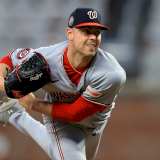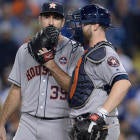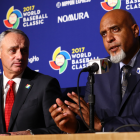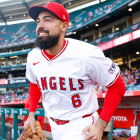MLB has a problem with mound visits and pace of play and we've got a solution
MLB is in excellent shape right now, but that doesn't mean it's perfect
The 2017 Major League Baseball season is in the books. For my money, it was an overwhelming success. The World Series was incredible, even if Game 7 didn't bring much in the way of fireworks after the first two innings. We saw a franchise win their first World Series. The game was already chock full of young stars and we've added a few more to the list, thanks to Aaron Judge and Cody Bellinger's rookie campaigns. We saw Giancarlo Stanton nearly join the 60-homer club.
Local TV ratings continue to be dominant in the majority of the markets. The overall league attendance did drop, but it was still the 15th-highest attendance total in MLB history. World Series TV ratings dropped, but consider the 2016 World Series and what was on the line. The 2017 World Series was the second-highest rated since 2009. Further, Game 5 beat Sunday Night Football (NFL) head to head.
The sport is ripe, but that doesn't mean it's perfect. So, yeah, we're gonna talk about pace of play and how to fix it.
Pace of play has been a big thing under commissioner Rob Manfred and rightfully so. Games these past few years have taken longer than ever before. We're seeing four-plus hour nine-inning games. Generally speaking, die-hard fans don't get overly annoyed by this, but the goal is to retain die-hards while trying to keep the attention of casual fans and continue bringing new fans to the game.
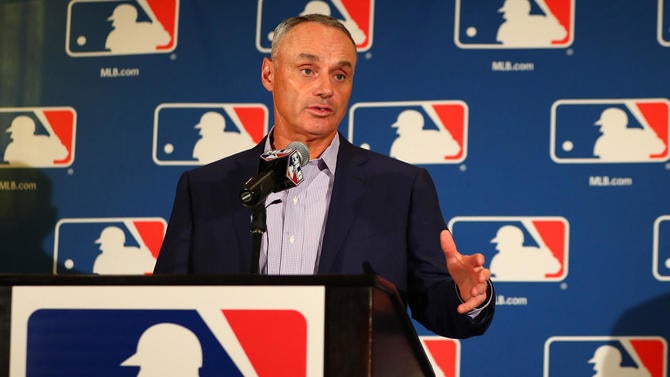
As a case study, let's use the length of the games during the World Series to analyze the issue at hand:
Game 1: A thing of beauty. It was one of the fastest World Series games in years at 2:28.
Game 2: This one was 4:19, but it went 11 innings. That isn't horrible, but let's keep in mind that this was a Wednesday night and the game ended well after midnight ET. Even getting up around 11:30 p.m. CT seems like it's stretching things for casual fans.
Game 3: 3:46. That got us past midnight ET. It was a Friday, but that's still late when we're talking about hoping to get kids hot for the game.
Game 4: A nice 3:06, ending at 11:26 p.m. ET on a Saturday night. It wasn't even 10:30 locally in Houston and back in Los Angeles it was only 8:26. This one was probably fine.
Game 5: This one hurt. It went five hours and 17 minutes. This was a Sunday night and the game ended at 1:37 a.m. ET, 12:37 a.m. in Houston and even 11:37 p.m. Mountain time is pretty late for a work/school night. It was one of the most amazing games in World Series history and MLB had to have lost millions of viewers to sleep in the late innings. This is problematic, no?
Game 6: A 3-1, nine-inning game and still took 3:22, ending at 11:42 p.m. ET. We can do better than that, right?
Game 7: A 3:37 affair, ending just three minutes before midnight on a work/school night. This is the biggest game the sport can possibly have and we're taking a huge portion of the audience to midnight. Even in Central, we're surely losing a lot of the casual fans.
Now, this is about where the Internet Tough Guys come along to kick and scream about how baseball is fine how it is and they just love the game so much more than everyone else. Cool for you. We die-hards can't keep baseball booming on our own, guys. Lamenting the lack of attention span to different generations doesn't help either. The name of the game here is to evolve and attempt to grab and retain as much of the sports fan market as possible.
As noted, the game has the attention of the country. It has the big-time superstars, a very exciting product and some incredibly likable, young and well-built teams like the Astros, Cubs, Indians, Dodgers, Yankees and Nationals with some up-and-comers like the Twins and Diamondbacks.
Now it's time to get the TV show right (shout-out to my brother via text handing me this line during Game 7).
Some possible problems:
- We don't have to have side commercials during the inning. You know, they don't leave for commercial break, but instead show an aerial and have the broadcasters start reading an ad. Of course, I was laughing as I wrote this at the thought of MLB considering losing ad dollars.
- Time between pitches is ridiculous. The pitch clock is probably inevitable and that helps us here.
- The stepping off and stepping out gamesmanship crap is very annoying (see: John Lackey in Game 2 of the NLCS). I don't have a good solution here, though, outside the extreme like giving umpires carte blanche in assigning balls to pitchers doing it or strikes against hitters doing it. That's probably too much discretionary power, though.
- Mound visits are excessive.
Let's dig in on the last one.
I love baseball. It's been my main passion in life since I could barely walk and not much has changed on that front. To say I loved every minute of the World Series isn't too far off, but it does miss the mark.
With every game, especially as the Series moved on, I wanted to scream at the excessive number of visits to the mound. During Game 7, it was anecdotally almost as bad as I've ever seen, namely in the early innings when Astros catcher Brian McCann was trying to coach Lance McCullers through some jams.
We know the Astros' counterpart in the World Series, the Dodgers, are notorious for excessive mound visits. Last offseason, in talking about a possible fix for pace of play, I noted that in Game 1 of the 2016 NLCS, they had a mound visit before every single hitter in the eighth inning. Just thinking back to the LCS round this year, we know Cubs catcher Willson Contreras and Yankees catcher Gary Sanchez both love to hop out there and talk to their pitchers.
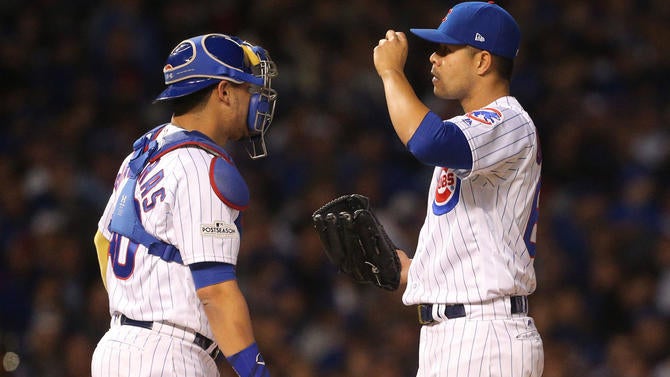
Look, I understand what's going on. There's lots of sign stealing and they need to be on the same page. Later in the game, the pitches matter more and, again, they have to be on the same page. Livelihoods are at stake.
There also needs to be some professional accountability. The players have all day to game plan. They have between innings to discuss different indicators. It's gotten to the point that the catchers and pitchers are far too reliant on the ability to just meet on the mound any time they feel like it.
"I would to like to see a reduction because at times it can disrupt the rhythm of the game. We'd like the ability to achieve what you want without making a trip to the mound," since-fired Red Sox manager John Farrell told the Boston Globe back in July.
Correct. Get the planning to the point that they have the ability to communicate without disrupting the game.
I'm not suggesting we outlaw the mound visit, but they need to be policed. Last season, I suggested counting each mound visit as a "trip" to the mound (teams are only charged with a trip if a coach or manager head out there) and adding a trip allowed. So each team would be permitted two trips before being forced to change pitchers. Screw that. I've seen enough to know now that we'd get two every inning.
My solution now is to count any mound visit that isn't during a home run trot or replay review as a trip and leave the allowed number in place. You have one per inning, max, catchers. Use it wisely. Otherwise, figure out the communication on your own time.
This is such a great game and it's so healthy right now. Let's keep trying to find ways to make it better. No one wants to see the catcher running out to the mound upwards of six times in an inning. We can start here in the "pace of play" discussions, Mr. Commissioner. Let's get on that this offseason, please.




